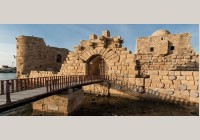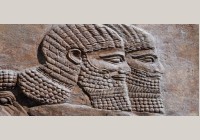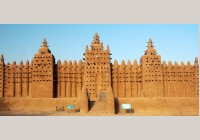Afrikaans
Afrikaans, also known as the Cape Dutch, belongs to the west Germanic branch of the Indo-European language family. It is spoken by 6.9 million people as a first and by 10.3 million people as a second language in South Africa. Afrikaans is also spoken in Botswana, Lesotho, Malawi, Namibia, Swaziland and Zambia. It is estimated that the total number of first language speakers of Afrikaans is 7.1 million but the numbers have been decreasing. ..
Albanian
Mirë se vjen – Welcome
Albanian (also known as Shqip), forms a branch of the Indo-European language ifamily all by itself. It is spoken by 7.3 million people in Albania, Kosovo, Macedonia, Montenegro, Bulgaria, Czech Republic, Greece, Turkey, and by immigrant communities world-wide. Albanian was finally proven to be an Indo-European language only in 1854.
Although there is no consensus..
Amharic
Sälam (ሰላም)
Amharic (amarəñña, አማርኛ), also known as Abyssinian, Amarigna, Amarinya, Amhara, Ethiopian, belongs to the Semitic branch of the Afro-Asiatic language family. Amharic has close to 22 million first-language speakers and 4 million second-language speakers worldwide, of which slightly over 21.6 million live in Ethiopia (Ethnologue). It is related to Ge’ez, a liturgical language of the Ethiopian Orthodox Church. Amharic has been the langu..
Arabic (Egyptian Spoken)
Ahlan wa sahlan! – Welcome
Egyptian Arabic, also known as Egyptian Spoken Arabic, Masri, Massry, Normal Egyptian Arabic and Egyptian Colloquial Arabic, is a variety of Arabic which belongs to the Semitic branch of the Afro-Asiatic language family. It is spoken by 56,400,000 people in Egypt (Ethnologue). It also serves as a second language in man..
Arabic (Levantine)
Ahlan wa sahlan! – Welcome
Levantine Spoken Arabic is a general term that covers a continuum of spoken dialects along the Eastern Mediterranean Coast of Syria, Lebanon, Jordan, Palestine, and Israel. The worldwide population of speakers of Levantine Arabic is estimated at around 20 million people, many of whom are expatriates from countries where it is spoken...
Arabic (Modern Standard)
Ahlan wa sahlan – Welcome
Modern Standard Arabic (MSA), also called Al-’Arabiyya, Al-Fusha, and Literary Arabic, is the modern standard language based on Classical Arabic, the language of the Qur’an and early Islamic literature. MSA is quite uniform throughout the Arab world and serves as a lingua franca for speakers of various spoken dialects some of wh..
Arabic (Moroccan Spoken)
Ahlan wa sahlan! – Welcome
Moroccan Arabic, also known as Maghrebi Arabic, Maghribi, Moroccan Colloquial Arabic, Moroccan Dareja, Moroccan Darija, Moroccan Dereja, is a continuum of dialects spoken in Morocco, Algeria, Tunisia, and Western Sahara. Magreb (which means ‘western’ in Arabic) is the region of Africa north of the Sahara desert and west of the Nile river..
Arabic (Overview)
Ahlan wa sahlan – Welcome
Arabic (al-‘arabiyyah, العربية) is a macrolanguage. As the largest member of the Semitic branch of the Afro-Asiatic language family it includes all descendants of Classical Arabic spoken primarily across the Middle East and North Africa. Its closest living relatives are Hebrew and Aramaic. The term Arabic has several meanings. It c..
Aramaic
Welkom – Welcome
Aramaic (ארמית Arāmît, Ārāmāyâ), a member of the Semitic branch of the Afro-Asiatic language family, has a remarkable 3,000-year history. It was spoken by Aramaeans, an ancient semi-nomadic people who had lived in upper Mesopotamia. This area is now, occupied by Iraq, eastern Syria, and southeastern Turkey. Hebrew is closely related to Aramaic.
Aramaic i..
Armenian
Pari yegar! | Bari galust! – Welcome
Armenian (հայերեն, Hayaren) belongs to the Indo-European language family. It forms its own independent branch and has no close relatives. It is generally thought to be most closely related to Greek.
Status
According to Ethnologue, Armenian is spoken worldwide by about 5,924,320 people, of whom 3,140,000 live in the Republic of..
Assamese
Assamese is the easternmost member of the Indo-Aryan branch of the Indo-European language family. It is spoken as a first language by 12.8 million people primarily in the Indian state of Assam and in the neighboring states of West Bengal, Meghalaya, and Arunachal Pradesh as well as in Bangladesh and Bhutan (Ethnologue).
Assamese is thought to ha..
Aymara
Purintaxa – Welcome
Aymara (Aymar aru) belongs to the Aymaran language family. It is spoken by the indigenous Aymara people in Bolivia, Peru, Northern Chile, and Argentina (Ethnologue). The total population of Aymara speakers is estimated at 2.8 million people. It is believed that the original homeland of Aymara was Peru, and that the language later spread into neighbori..
Azerbaijani
Xoş gəlmişsiniz – Welcome
Azerbaijani (Азәрбајҹан дили, آذربایجان دیلی), also known as Azeri, is a member of the Turkic branch of the Altaic language family. Turkic-speaking peoples first appeared in the area that is today’s Azerbaijan in the 7th century AD. The region became Turkic-speaking in the 11th century when it was invaded by the Turks. It was invaded by Mongols i..
Balochi
Vsh atke- Welcome
Balochi (also called Baloci, Baluchi, Baluci, Baluchi) is a member of the Indo-Iranian branch of the Indo-European language family. It is the main language of Balochistan (Baluchistan), a province of Pakistan. It is estimated that about 7 million people speak Balochi as their first or second language. They are spread over a vast area encompassing southeaster..
Bamanankan
i ni chè – Welcome
Bamanankan, also known as Bambara and Bamanakan, is a member of the Mande group of the Niger-Congo language family. It is spoken by 4 million people as a first language and by another 10 million people in Mali and in the neighboring, Côte-d’Ivoire (Ethnologue).
Much of Bamanankan’s history is unwritten and is preserved mainly through..
The Windows 7 On-Screen Keyboard is very versatile and loaded with features. To change language support just press Left-Alt+Shift – if the keyboard is configured.
Before we start on that, you may wish to install language support to bring in other features. For that see How do I install a display language?
Click the START orb and type “language”. The Start menu will include Region and Language. Click it. (Of course you can get there from the Control Panel.) In the next dialog click the Keyboards and Languages tab. The next window will look similar to this:
A long list of languages will be shown. Find the language you wish to install. Click on the + in front of the entry to expand the list. Similarly expand Keyboard. Select the keyboard language from the last options, make sure the box is checked. Then click OK. You can now see the installed languages in the Text Services and Input Languages window. You are all set.
The keyboard language in use can be seen at the right end of the Taskbar. In the illustration here the current language is RU – Russian. To switch to another language press Left-Alt+Shift. On successive presses this will cycle through the available languages (that are set up as described above).
NOTE: Make the keyboard selection when an application using keyboard input is open. You can make a different selection in another application. The keyboard selection is “sticky” – switching to the other application will also switch the keyboard selected in that application. This makes working in different languages really easy.
When the Language Pack is installed for a supported language, the On-Screen Keyboard offers a very nice feature: auto-complete options. Not all languages are supported in this way. English is, so is German. Auto-complete is not supported for Russian.
In this illustration two instances of WordPad are running (hold down the Shift key when selecting a program to open another instance). The keyboard was set for Russian in one and German in the other. Note the auto-complete option offered above the normal keys. The selection is refined as additional letters are selected. Auto-complete is not active when using the hardware keyboard, it only works with the On-Screen Keyboard.
Windows 7 can display characters and other features of a wide range of languages. Support for several languages may be installed on your computer. To add another language, proceed as follows:
Click START > Control Panel >
Clock, Language, and Region
On Region and Language click Install or uninstall display languages
In the next dialog click Install display languages.
The next window asks you to chose the method of installation.
Click Launch Windows Update. Note the line about optional updates. In the illustration here it says “35 optional updates are available”. It may be different on your computer. Click that phrase. You will be offered a choice of Language Packs.
You can chose more than one Language Pack. Click to select. The click OK.
The next choice is to install:
Click Install updates.
The download and installation process may take a long time.
When the process finishes your Language Pack or Packs are installed.















